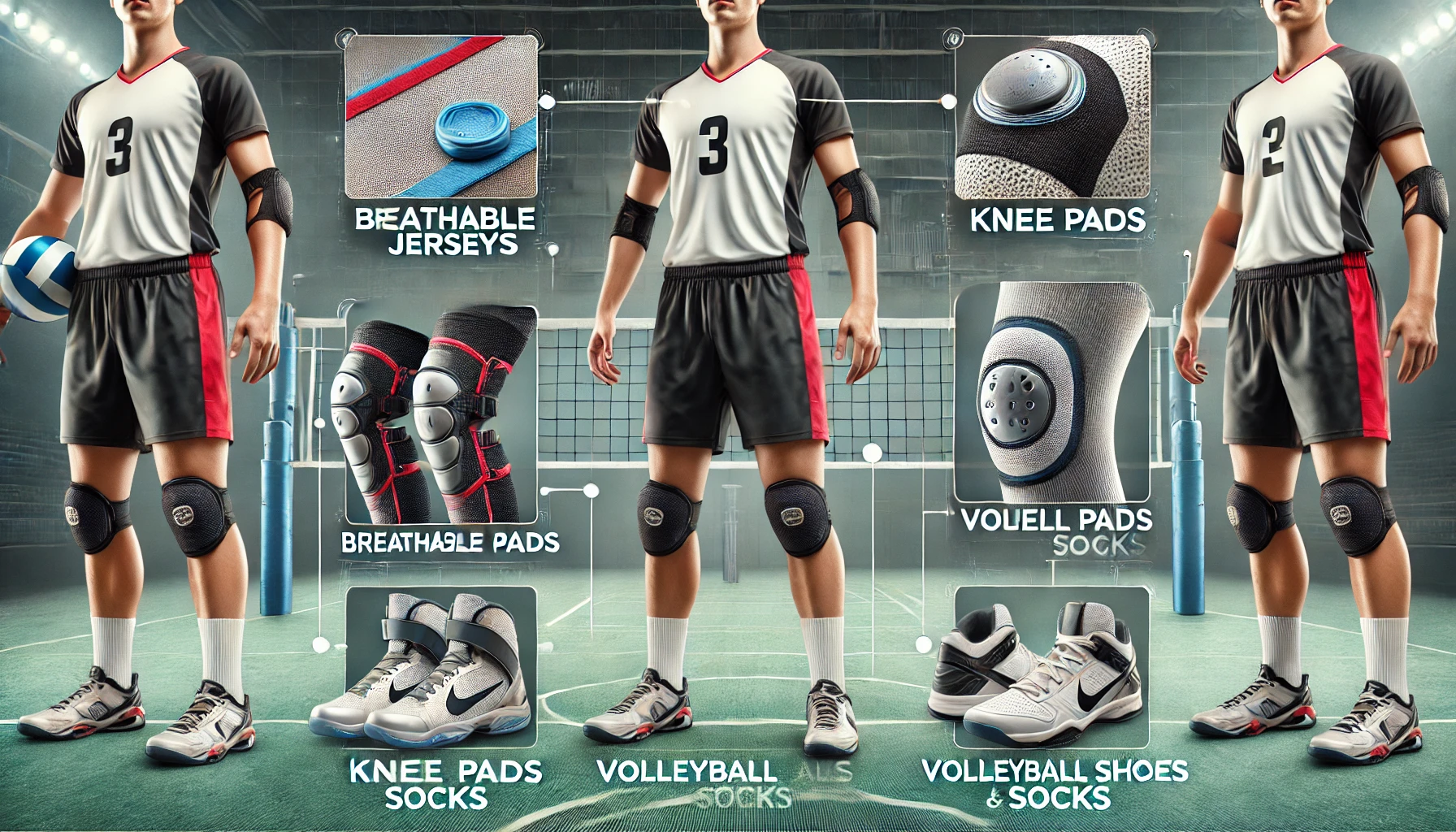Playing volleyball requires the right clothing and equipment to enhance performance and ensure safety. Whether playing indoors or on the beach, wearing appropriate gear is key to excelling on the court. In this guide, we will discuss what players should wear for optimal comfort, movement, and protection.
Volleyball Jersey
A volleyball jersey is essential for allowing freedom of movement and keeping players cool during the game. Look for the following features:
- Breathable fabric: Most jerseys are made of polyester or moisture-wicking material to keep sweat away.
- Fit: The jersey should be snug but not too tight, allowing flexibility without restricting movement.
- Team colors: In competitive matches, wearing the right team colors is crucial for easy identification.
Shorts
Volleyball shorts are designed for agility and ease of movement. Features to look for:
- Elastic waistband: Ensures a secure fit without slipping during movement.
- Stretchable fabric: Allows for maximum mobility, especially when diving or jumping.
- Length: Shorts should not be too long as this could impede movement on the court.
Knee Pads
Knee pads are one of the most important pieces of gear for indoor volleyball players, providing protection during dives and falls.
- Cushioning: Look for knee pads with thick padding to absorb impact.
- Flexibility: Knee pads should be flexible enough to allow bending while still offering protection.
- Fit: They should fit snugly around the knee without sliding down during play.
Volleyball Shoes
Proper footwear is crucial for both indoor and beach volleyball. Volleyball shoes offer the right balance of grip, cushioning, and stability.
- Indoor Shoes: Have gum rubber soles that provide excellent grip on smooth courts.
- Cushioning: Proper cushioning reduces the impact on knees and ankles from repeated jumping.
- Lightweight: A lightweight shoe allows players to move quickly without feeling weighed down.
For beach volleyball, sand socks or lightweight sneakers are preferred to protect feet from hot sand and provide better traction.
Socks
Wearing the right socks can prevent blisters and improve comfort.
- Moisture-wicking socks: These help keep feet dry, reducing the risk of blisters.
- Ankle-length or crew socks: Both types are commonly used depending on the player’s preference.
Protective Accessories
In addition to essential clothing, some players may choose to wear extra protective or performance-enhancing accessories.
Arm Sleeves
Arm sleeves help prevent abrasions and can provide additional warmth for muscles. They are especially useful for players who frequently dive or play in cooler conditions.
Headbands and Wristbands
These accessories help absorb sweat and keep it from dripping into the eyes. Headbands and wristbands are commonly made from terry cloth for maximum absorption.
Ankle Braces
Ankle injuries are common in volleyball, and wearing an ankle brace can help provide extra support and prevent sprains.
Beach Volleyball Gear
For beach volleyball, the requirements are slightly different due to the outdoor environment. Key items include:
- Swimsuit or beachwear: Light and comfortable clothing that allows free movement.
- Sunglasses: To protect eyes from the sun and improve visibility.
- Hat or visor: For added sun protection and to keep sweat away from the eyes.
| Indoor Gear | Beach Gear |
|---|---|
| Breathable jersey | Lightweight beachwear |
| Knee pads | Sunglasses, hats |
| Volleyball shoes | Sand socks or shoes |
Conclusion
Wearing the right gear on the volleyball court can make a significant difference in performance and safety. From breathable jerseys to knee pads and specialized shoes, each piece of clothing or equipment is designed to support the dynamic movements of the game. Whether you are playing indoors or on the beach, be sure to equip yourself with the right gear to stay comfortable, protected, and ready for action.

